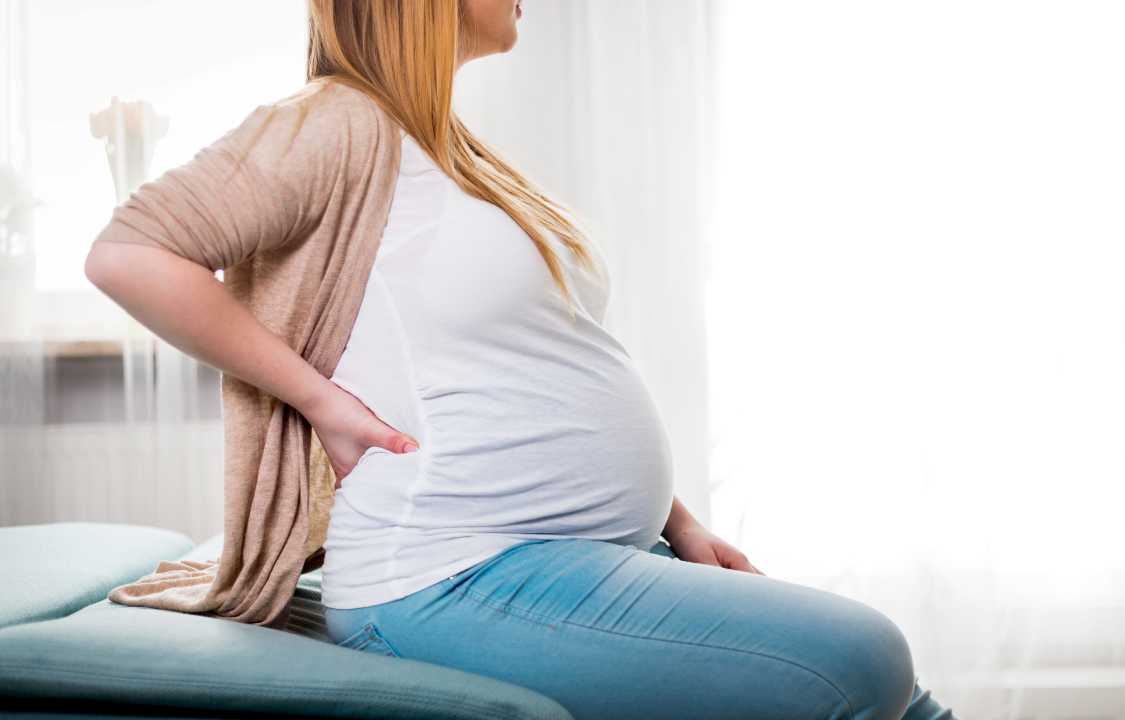Here is one individual’s experience with unbearable sciatica pain during their third trimester of pregnancy.
As a mother of two energetic small children, my daily routine primarily consisted of sitting on the floor with them or tirelessly cleaning it. However, when I reached the 34-week mark of my third pregnancy, the simple act of standing up had transformed into a Herculean task, accompanied by wincing, whining, and the occasional, involuntary shriek of pain.
The source of my agony? Pregnancy-induced sciatica.
Much like many expectant mothers in their third trimester, I found myself grappling with intense pain that seemed to shoot through my lower back, rear end, and right thigh whenever I attempted to engage in any activity more exciting than exiting a car. It was as though my unborn child had decided to take up residence directly on top of my sciatic nerve.
This, coupled with the array of other third-trimester symptoms, such as persistent fatigue and pesky charley horse leg cramps, made for an excruciating and challenging final stretch of pregnancy.
In my moments of floor-bound desperation, I embarked on a quest to unravel the mysteries of lower back pain during pregnancy and, more importantly, to discover some much-needed relief.
The Sciatica Saga: Unpacking the Pain
The burning question that nagged at me was, “Is this truly sciatica?” To shed some light on this matter, I sought the insights of Charles Lockwood, MD, a distinguished professor of obstetrics, gynecology, and reproductive sciences at Yale-New Haven Hospital, and the senior vice president for USF Health.
According to Dr. Lockwood, pregnancy-induced back pain often stems from the loosening of typically stable pelvic joints, such as the symphysis pubis and sacroiliac joints. In simpler terms, it’s as if these crucial joints received an open invitation to slack off during pregnancy, causing aching discomfort.
But my healthcare provider leaned toward a diagnosis of sciatica. Dr. Lockwood explained that pregnancy-related sciatica typically arises from a combination of factors: a change in posture, known as lordosis, caused by the burgeoning pregnancy bump, which places strain on the sciatic nerve; increased pelvic pressure, driven by factors like the fetal head and an expanding uterus; and a realignment of pelvic bones.
So, how could I alleviate this debilitating pain and regain the ability to lift my children out of the bathtub without unleashing a symphony of agonized screams?
Dr. Lockwood’s response was disheartening but truthful: “The ultimate cure is delivery.”
This blunt statement was a harsh reality check. I had experienced similar sciatic nerve issues during my previous pregnancies, and I vividly remembered the sweet relief that washed over me once my babies were born. However, with several weeks of pregnancy left, I needed a solution to endure the pain until delivery day.
The Quest for Relief
Determined to find a remedy that would make life more bearable, I embarked on a journey through various alternative therapies. During my previous pregnancy, acupuncture and prenatal massages had provided some relief, albeit temporarily. While they helped me sleep better for a few nights, the relief was short-lived.
I had also heard of pregnant individuals finding solace in chiropractic care, but the idea of having my body manipulated while pregnant gave me pause. It just didn’t sit well with me.
Dr. Lockwood, however, offered an intriguing solution: changing my mattress. He recommended transitioning to a firmer mattress if I had been using a soft one, or experimenting with a feather mattress if my current one was too hard.
Upon closer examination of our mattress, I discovered a noticeable indentation that my pregnant body had created over time. While purchasing a new mattress wasn’t exactly a budget-friendly option, I was fortunate enough to activate the warranty on our current one. I swapped it out for an extra-firm mattress, and within a matter of days, I experienced a significant difference.
As I lay down at night, my lower back would audibly snap, crackle, and pop against the unyielding surface, gradually relaxing into the unaccustomed hardness. By morning, I felt markedly more prepared to tackle the day’s toddler-related challenges.
Although the sciatic nerve symptoms persisted—the baby’s head continued to exert pressure on the nerve—the process of getting up from the floor became significantly less excruciating. I relied on the occasional Tylenol dose and warm (but not scalding) showers or baths to maintain this relatively pain-free state.
In some severe cases, Dr. Lockwood mentioned that healthcare providers might prescribe narcotics for expectant individuals grappling with excruciating sciatica. Fortunately, my situation didn’t necessitate such measures. I counted down the days until the pain would be mercifully extinguished by the arrival of my newborn.
In Conclusion
Pregnancy-induced sciatica is an unwelcome and often excruciating companion during the later stages of pregnancy. It can transform seemingly simple tasks, like standing up or getting out of a car, into painful ordeals.
While there may not be a magic bullet for immediate relief, expectant parents enduring the throes of sciatica can explore various strategies to make this challenging period more manageable. Alternative therapies like acupuncture and prenatal massage may offer temporary respite, and some individuals have found comfort in chiropractic care.
However, one unorthodox but surprisingly effective solution suggested by medical professionals is to evaluate and potentially change your mattress. Whether transitioning to a firmer surface or trying out a feather mattress, this approach may provide substantial relief.
Ultimately, the ultimate cure for pregnancy-induced sciatica is the delivery of your baby. Until that day arrives, it’s essential to explore different options, manage pain with safe remedies, and lean on the support of healthcare providers for guidance. While the journey through pregnancy’s final stretch can be trying, the reward of meeting your new bundle of joy at the end of it all makes it undeniably worthwhile.

